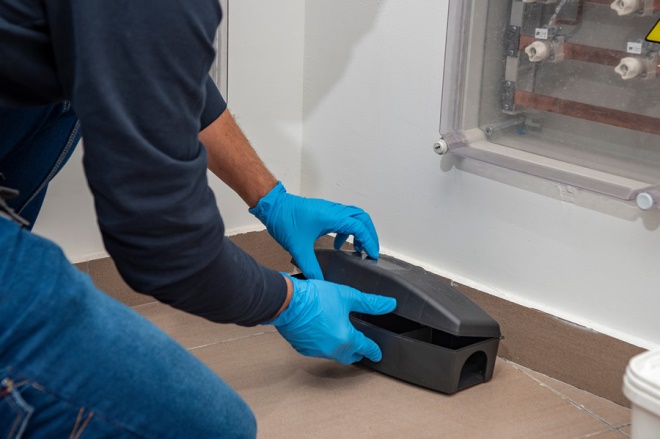
Introduction:
Pest control is a crucial aspect of maintaining a clean and healthy home environment. Unwanted pests can not only damage property but also pose serious health risks to you and your family. In this comprehensive guide, we will explore various strategies to keep pests at bay, from DIY methods to professional Pest control services. Let’s dive in and discover the best ways to ensure your home remains pest-free.
Common Household Pests:
Household pests come in various shapes and sizes, each with its own set of challenges. Common pests include ants, spiders, cockroaches, rodents, termites, and bed bugs. These pests can infiltrate your home through tiny openings, infesting your living spaces and creating potential health hazards. Understanding their behavior is crucial to effectively combatting them.
Understanding Pest Behavior:
Pests are remarkably adaptable creatures. They can find their way into your home through cracks, gaps, and even hitch rides on items you bring indoors. Once inside, they seek out food, water, and shelter. Knowing their habits and hiding spots is key to preventing infestations. Identifying vulnerable areas and sealing entry points can make a significant difference in keeping pests out.
DIY Pest Prevention:
Prevention is the first line of defense against pest invasions. Simple practices like regular cleaning, proper food storage, and fixing leaky faucets can eliminate potential attractants. Sealing gaps in doors, windows, and walls prevents pests from finding their way in. Additionally, maintaining a clutter-free environment reduces hiding spots and breeding grounds.
Natural Pest Control Methods:
For those who prefer eco-friendly solutions, natural pest control methods offer a sustainable alternative. Essential oils such as peppermint, lavender, and neem have proven repelling properties. Diatomaceous earth is a natural powder that damages pests’ exoskeletons. Plants like marigolds and basil can act as natural deterrents.
Chemical Pest Control:
When faced with a significant infestation, chemical pesticides may be necessary. However, their use requires caution due to potential health and environmental risks. Always follow instructions carefully and consider less toxic alternatives first. If using chemicals, target application to affected areas to minimize exposure.
Hiring Professional Pest Control Services:
In severe infestations or when dealing with pests that pose health risks, seeking professional help is wise. Pest control experts have the knowledge and tools to tackle challenging situations safely and effectively. When choosing a pest control company, look for those with proper licenses, experience, and positive reviews.
Integrated Pest Management (IPM):
Integrated Pest Management is a holistic approach that combines preventive measures, monitoring, and targeted interventions. This strategy focuses on long-term solutions rather than quick fixes. It involves identifying the pest, assessing its impact, and implementing a customized plan that may include physical, biological, and chemical controls.
Pest Control for Gardens and Lawns:
Pests aren’t limited to indoor spaces. Gardens and lawns can also fall victim to infestations. Employing practices like companion planting, introducing beneficial insects, and practicing proper irrigation can help maintain a balanced ecosystem that discourages pest proliferation.
Preventing Pest Infestations in Different Seasons:
Pest activity can vary with the seasons. Understanding these fluctuations is crucial for effective control. For example, rodents might seek warmth indoors during colder months, while mosquitoes thrive in warmer weather. Adapting your pest control methods to seasonal changes enhances their efficacy.
Dealing with Rodents:
Rodents like rats and mice can spread diseases and cause structural damage. Traps and baits can help control their populations, but sealing entry points is equally important. Regular inspections and prompt action are essential to prevent a small rodent issue from turning into a major infestation.
Bed Bug Prevention and Eradication:
Bed bugs are notorious for their ability to hitch rides on luggage and clothing. Regularly inspecting your bedding and upholstered furniture can help catch infestations early. If bed bugs are detected, thorough cleaning, washing bedding in hot water, and using mattress encasements can aid in eradication.
Cockroach Control Strategies:
Cockroaches are resilient pests that thrive in dark and damp environments. Effective control involves eliminating food and water sources, sealing cracks, and using baits and traps. Keeping your home clean and dry is crucial for preventing cockroach infestations.
Termite Protection and Treatment:
Termites are a homeowner’s nightmare, as they can silently destroy the structural integrity of a house. Regular inspections and preventative measures, such as removing wood-to-soil contact and fixing leaks, can deter termite activity. In the case of an infestation, professional treatment is essential.
Conclusion:
Maintaining a pest-free home requires a combination of knowledge, proactive measures, and sometimes professional assistance. By understanding the behavior of common pests and implementing preventive strategies, you can create an environment that is inhospitable to pests. Regular maintenance and a vigilant eye will ensure your home remains a safe and comfortable haven.

